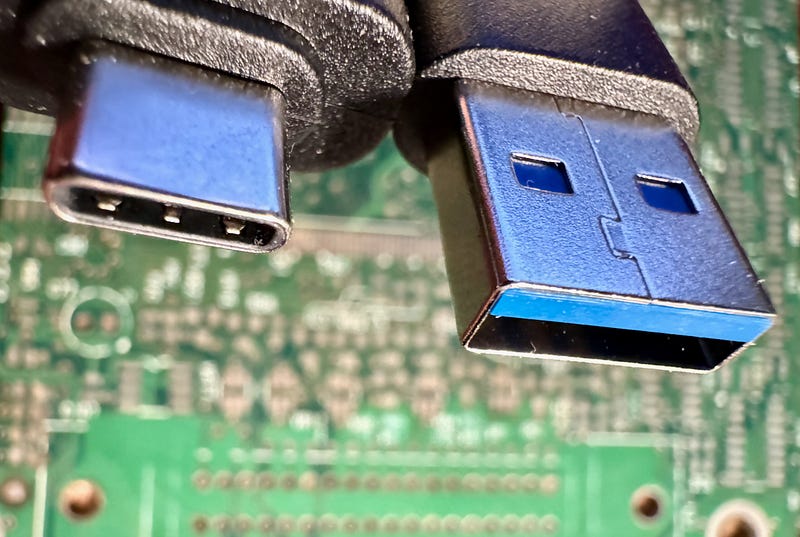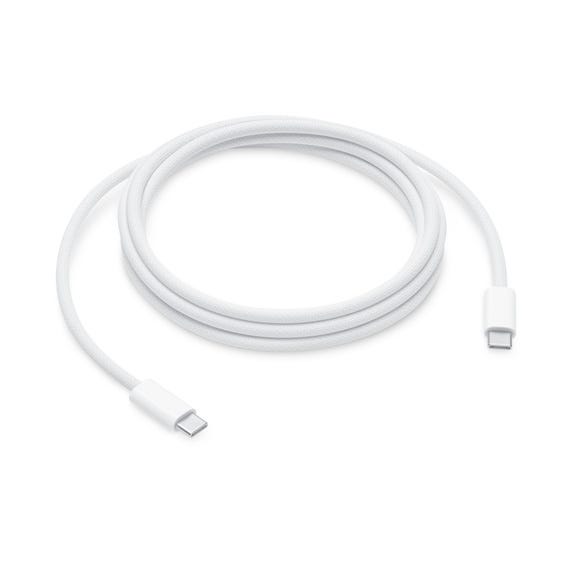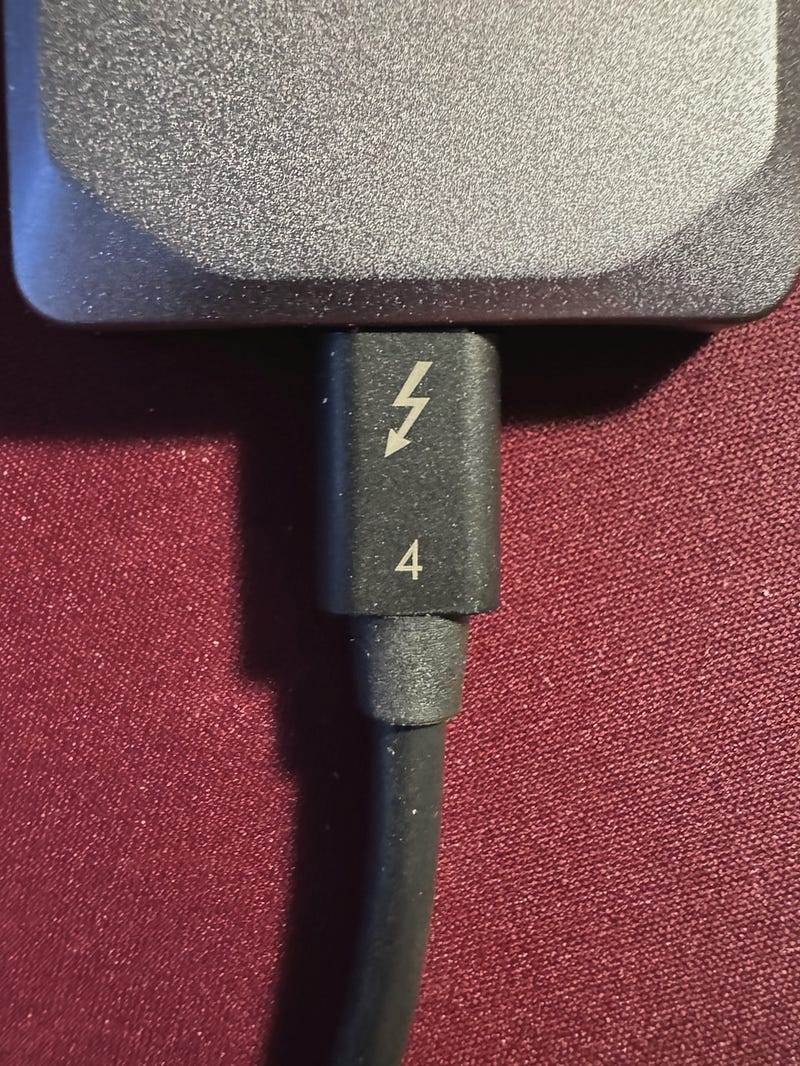Navigating the Confusion of USB-C Cables and iPhone 15 Changes
Written on
Understanding USB-C: A Shifting Standard
As an advocate for standardized technologies, I appreciate the convenience that they bring. Proprietary systems often lead to complications and higher costs. For years, USB has been a primary means of connecting devices in computing and the broader electronics landscape. However, the multitude of connector types associated with USB has historically muddled the standardization process. Today, we are witnessing USB-C emerge as the dominant connector, gradually phasing out older types from newer gadgets.

The Transition to USB-C in the iPhone 15
What’s the source of my concern? Let's examine a notable device: the recently released iPhone 15 series, which has sparked debate due to its shift from the Lightning connector to USB-C. This alteration frustrates many users who own a range of Lightning accessories. Conversely, I belong to the group that welcomes this change, as it aligns with the connectors on my Mac and iPad, as well as other devices I utilize outside the Apple ecosystem. It’s clear that Apple couldn’t satisfy everyone with this transition.
The way Apple has implemented this change encapsulates many of my concerns regarding USB-C. It’s important to note that USB-C refers solely to the connector type. The protocols transmitted through the cable are governed by another part of the USB standard, indicated as USB followed by a series of numbers. These numbers can change frequently, adding to the confusion.
Apple has introduced two iPhone families featuring the same connector, yet differing USB protocols among models. The Pro variants are equipped with USB 3.1 (Gen 2), boasting a maximum data transfer rate of 10Gb/s, while the non-Pro models are limited to USB 2, akin to the Lightning connector, with a maximum speed of 480Mb/s—a staggering 20-fold difference. Some analysts have criticized this as an act of cost-cutting by Apple, or even as a retaliatory measure in response to EU regulations. My belief is that the iPhone 15’s non-Pro models were likely held back by last year's A16 chip, which lacks a USB 3 controller, while the newer A17 chip in the iPhone 15 Pro is designed to support it. Cost and supply chain issues likely prevented the A17 from appearing in the non-Pro version.
The significant disparity in performance stems from the age of the protocols. USB 2 is quite old, pre-dating the iPhone and even the iPod's introduction in 2001. Meanwhile, USB 3.1, while more recent, is also over a decade old. Some Pro users are left wanting a more advanced protocol like USB4 or Thunderbolt 4, which can be found in Macs and some iPads.
This scenario illustrates why USB standards can be perplexing: new iPhones of the same line, sharing the same connectors, yet providing different data capabilities. Should users of the iPhone 15 feel shortchanged? Apple seems to assume that those needing rapid file transfers would opt for the Pro model, typically for large files like ProRAW photos or ProRes videos. In most cases, I believe this assumption holds true.
Charging Capabilities of USB-C
Power delivery (PD) is another critical function of USB-C, and all users need a way to charge their phones. Here, Apple has maintained consistency across all models, aligning the charging rates with those of previous Lightning models. Unfortunately, no rapid charging options have been introduced yet.

Apple exemplifies the confusion surrounding USB-C cables with the contents of each iPhone 15 box. Included is a cable featuring USB-C connectors on both ends, which is well-crafted and braided. However, its sole purpose is charging the phone. Attempting to use it for data transfer yields disappointing results; when tested with an external SSD on my Mac, the speed was limited to about 35MB/s. Despite being packaged with the iPhone 15 Pro, the performance mirrors that of USB 2 speeds from 2001. In contrast, the same SSD with a Thunderbolt 4 cable on my MacBook Pro achieves speeds of 900MB/s. Interestingly, while some USB SSD drives can provide even faster speeds, my MacBook Pro cannot leverage that potential due to its Thunderbolt 4 ports lacking support for USB 3.2 (Gen 2x2). It's uncertain if this is a technical limitation or simply an aesthetic choice by Apple's design team.
Why introduce Thunderbolt into this discussion? It may seem overwhelming, but it’s essential for illustrating my next point. Thunderbolt also utilizes a USB-C connector. However, to access full Thunderbolt capabilities, a Thunderbolt-specific cable is necessary. Though they appear similar to USB-C cables, Thunderbolt cables feature a lightning bolt icon on the connector along with a version number. My Thunderbolt 4 cables have proven compatible with all devices I connect them to. While USB cables can function in Thunderbolt ports, they won’t work with Thunderbolt-exclusive devices. USB4 seeks to merge Thunderbolt and USB for enhanced interoperability and performance, but USB4 devices remain relatively scarce, and Thunderbolt 4 often provides more predictable performance.

Broad Compatibility and Potential Pitfalls
Thunderbolt and newer USB versions can also transmit various other protocols through their cables. For instance, I have a portable 15" monitor that connects effortlessly using just a USB-C cable. This feature is incredibly valuable, provided you select the appropriate USB-C cable. Inside the compact USB-C connector are 24 tiny pins, and to utilize the full capabilities of the standard, all must be properly wired. This is unlikely if a cable is supplied for a single, limited purpose—such as the one included with the iPhone 15.
Here lies the crux of my argument: while having a standard that can deliver power and various data types is advantageous, the confusion arises from the fact that most USB-C cables look identical yet serve different functions. There is often no straightforward way to discern their capabilities at a glance. Labeling standards can be unreliable, making it frustrating when a seemingly suitable cable fails to work as intended. It can feel like a lottery when selecting a cable.
My approach? I avoid using the cable that comes with devices unless I am certain I won’t need it for anything else. When purchasing USB-C cables, I aim for Thunderbolt 4 certified options. I have yet to encounter issues with these, although they tend to be pricier and shorter. The next best alternatives are USB4 cables or high-quality USB3 cables with trustworthy power and data ratings (or those verified through reviews). If I find myself needing to carry multiple USB-C cables in my tech pouch for reassurance, I question whether I am truly benefiting from standardization and a unified cable.
I would love to hear if anyone has found a reliable and cost-effective method for testing USB-C cables to ascertain their supported functions.
The Messy Reality of USB-C
The first video delves into the confusion surrounding USB-C cables, discussing why so many variations exist and how to navigate the complexities.
The Chaos of USB-C Cables: A Comparison
In this second video, viewers are introduced to the chaotic world of USB-C, comparing budget and premium USB-C cables to highlight performance differences.
Meet the Live View Writers
Live View showcases a diverse group of authors who share their enthusiasm for photography. To learn more about them, their stories, and how to follow their work, visit the Live View About page.